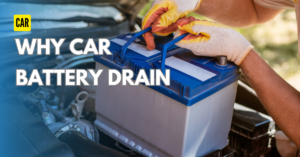When it comes to starting your car, the starter relay is an unsung hero in the ignition system. However, like all components, it can fail. If you’ve ever turned the key, only to be met with silence, it might be due to a bad starter relay.
In this blog, we’ll explore the signs of a failing starter relay and various methods to start your car in case it’s acting up.
How to Know the Starter Relay Goes Out ?
The starter relay is a small but vital component in your car’s ignition system. It plays a key role in sending power from the battery to the starter motor, which is responsible for cranking the engine. When the starter relay goes bad, you might notice issues that signal starter relay failure.
- Remains eerily silent.
- Refusing to turn over.
- Rapid clicking sound coming from the vicinity of the relay or the starter motor.
- Intermittent starting issues.
- Engine is cranking even though it’s already running.
Can You Jump Start a Car With Bad Starter Relay ?
The starter relay plays a crucial role in the starting process by connecting the battery to the starter motor. Jump-starting a car is a common technique used to revive a dead battery and get a vehicle up and running.
However, when it comes to jump-starting a car with a bad starter relay, power doesn’t reach the starter motor, and the engine won’t crank. In this scenario, jump-starting is not a solution.
Can You Bump Start a Car with a Bad Starter Relay?
Bump starting, also known as push starting or pop starting, is a method for starting a vehicle with a manual transmission when the starter motor isn’t functioning. This method relies on the vehicle’s forward momentum to engage the engine and overcome the lack of starter motor power.
A bad starter relay primarily affects the electrical connection between the battery and the starter motor. It doesn’t interfere with the mechanical components in the engine. Therefore, if your vehicle has a manual transmission and the issue is solely related to the starter relay, bump starting might be a viable option.
Swap the Relay with Another Non-Essential Healthy Relay
You can try swapping the faulty relay with another non-essential healthy relay in your vehicle. This can help determine whether the starter relay is indeed the problem.
Here’s how you can do it:
- Identify the faulty starter relay. You’ll typically find it in the relay/fuse box under the hood of your car. Refer to your owner’s manual or the diagram on the box to locate it.
- Locate another relay of the same type in the box that is not essential for the vehicle to run. For example, an accessory relay can work.
- Carefully remove the non-essential relay and swap it with the faulty starter relay.
- Attempt to start your car. If it starts, the issue is likely with the starter relay. Be sure to replace the faulty relay as soon as possible.
Bypass the Relay (Not Recommended for Modern Cars)
Bypassing the starter relay is a method that should only be used in emergencies and is not recommended for modern vehicles with advanced electronic systems. It involves manually providing power to the starter motor, effectively bypassing the relay.
Here’s how you can bypass the relay:
- Locate the starter relay in your vehicle’s relay/fuse box under the hood.
- Identify the terminals labeled “87” and “30” on the relay. These are the terminals that the relay uses to connect the battery to the starter motor.
- Carefully bridge a connection between these two terminals using a piece of wire or a conductive material. Ensure that the ignition is in the “on” position before attempting this.
- If the relay was the issue, your car’s starter motor will engage, and the engine should crank. However, remember that this method is not recommended for modern cars with complex electronic systems. It should be a last resort for getting your vehicle started temporarily in an emergency situation.


